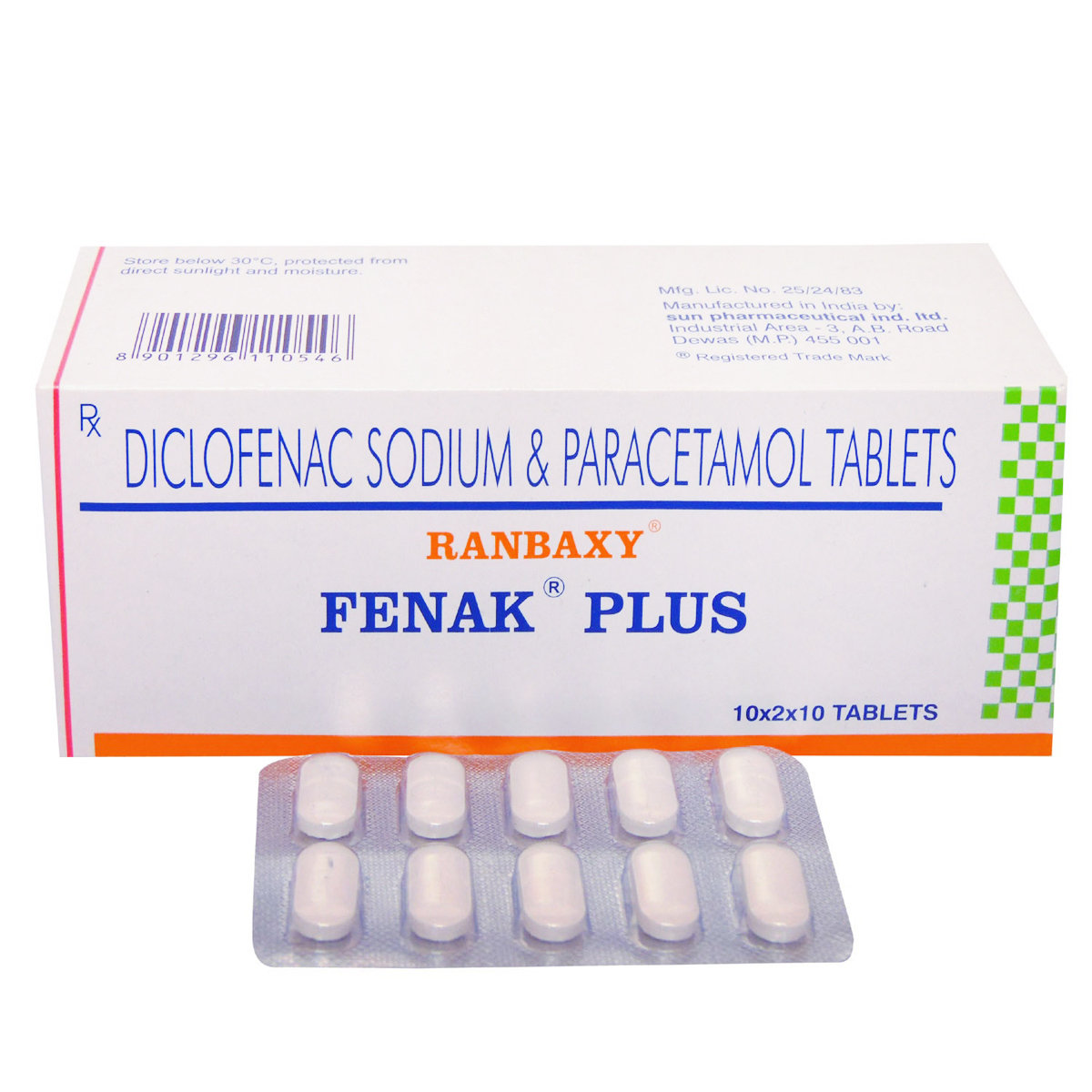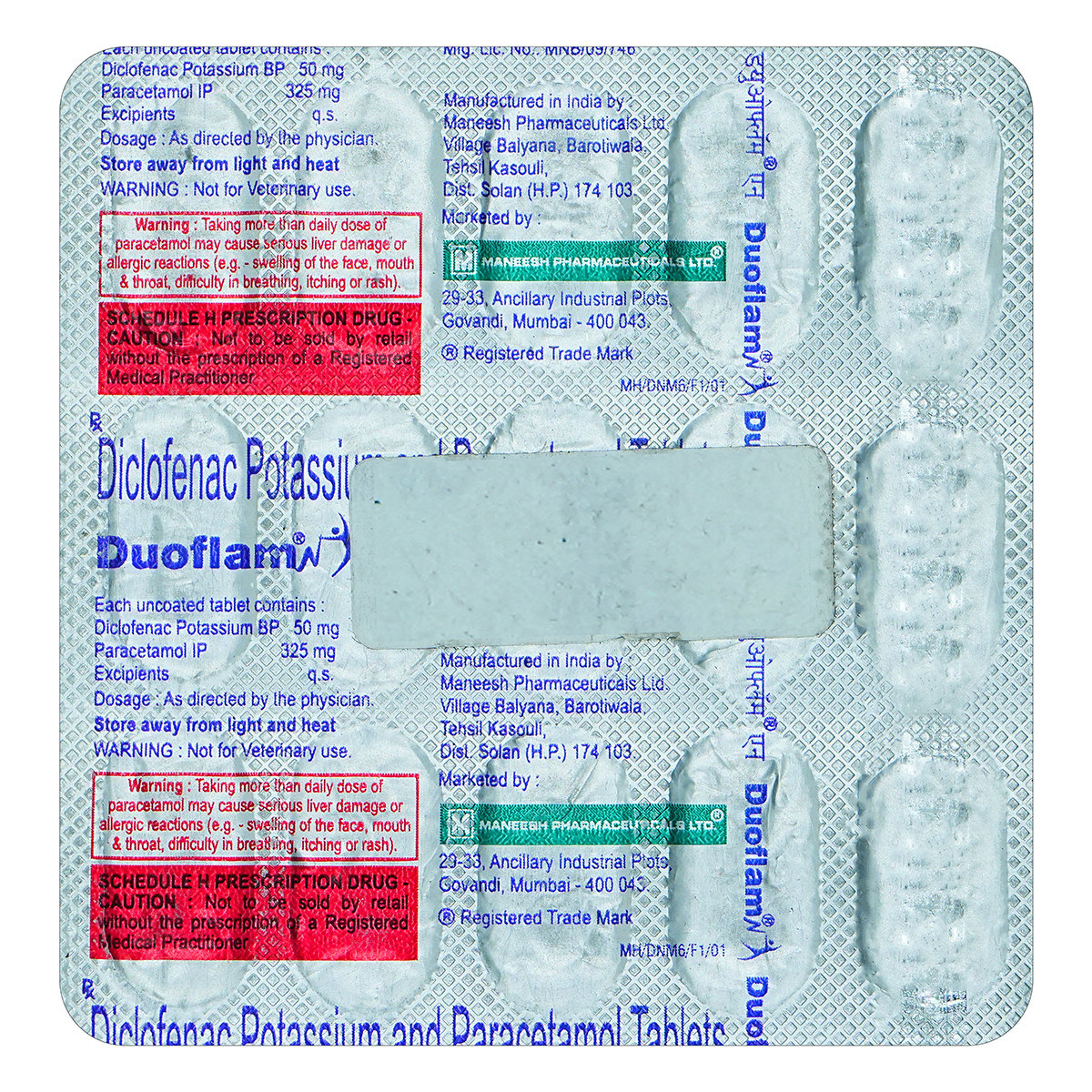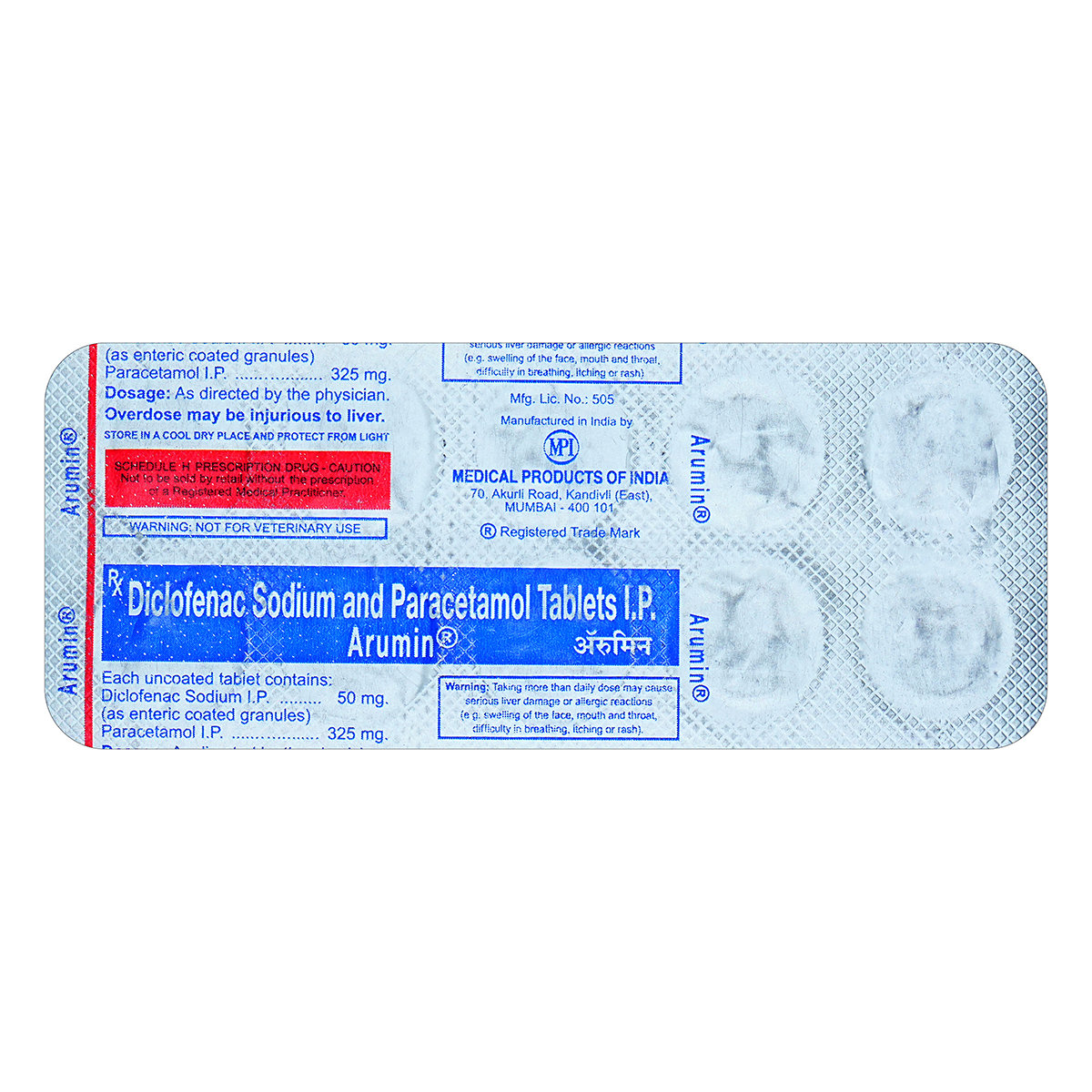Dolojust Tablet
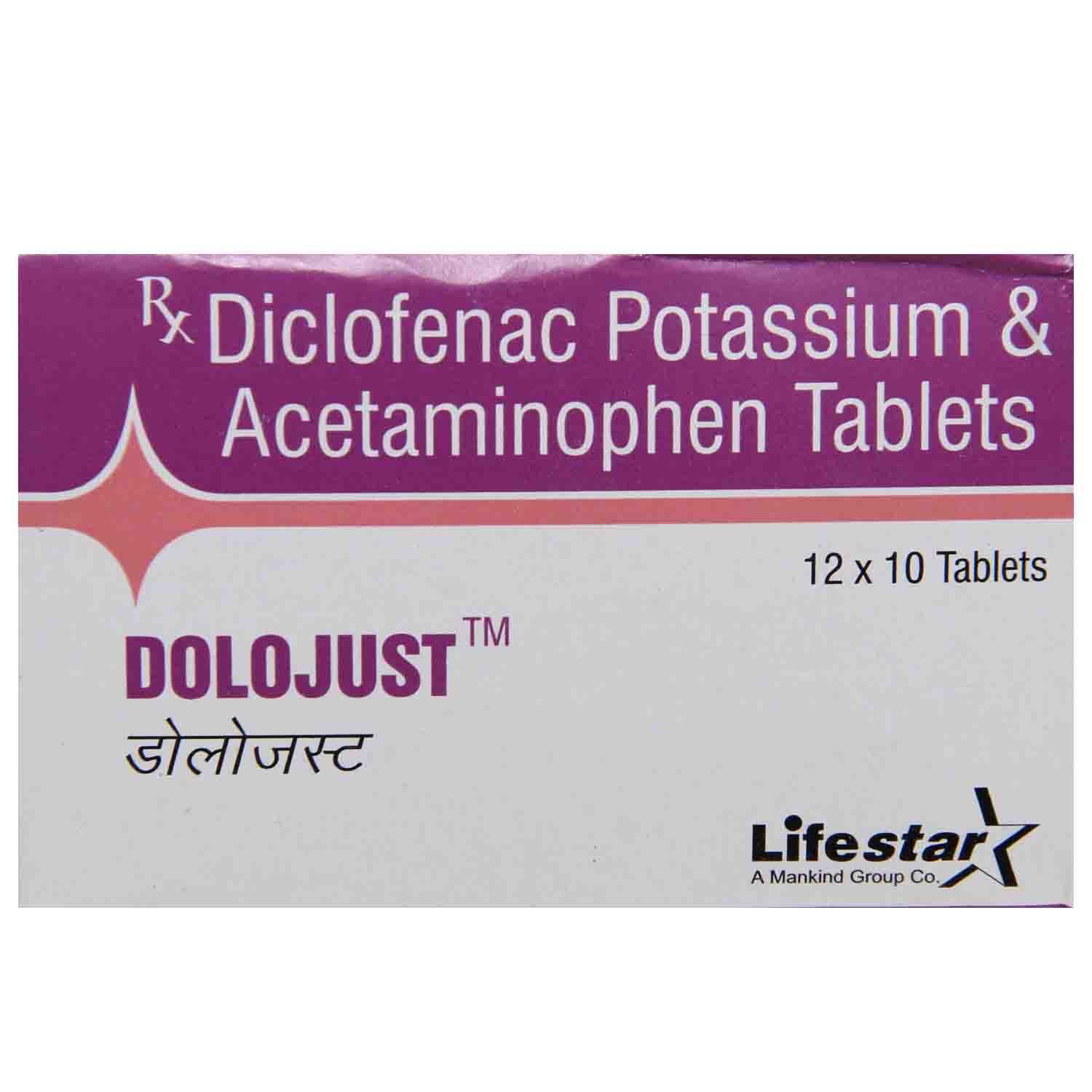
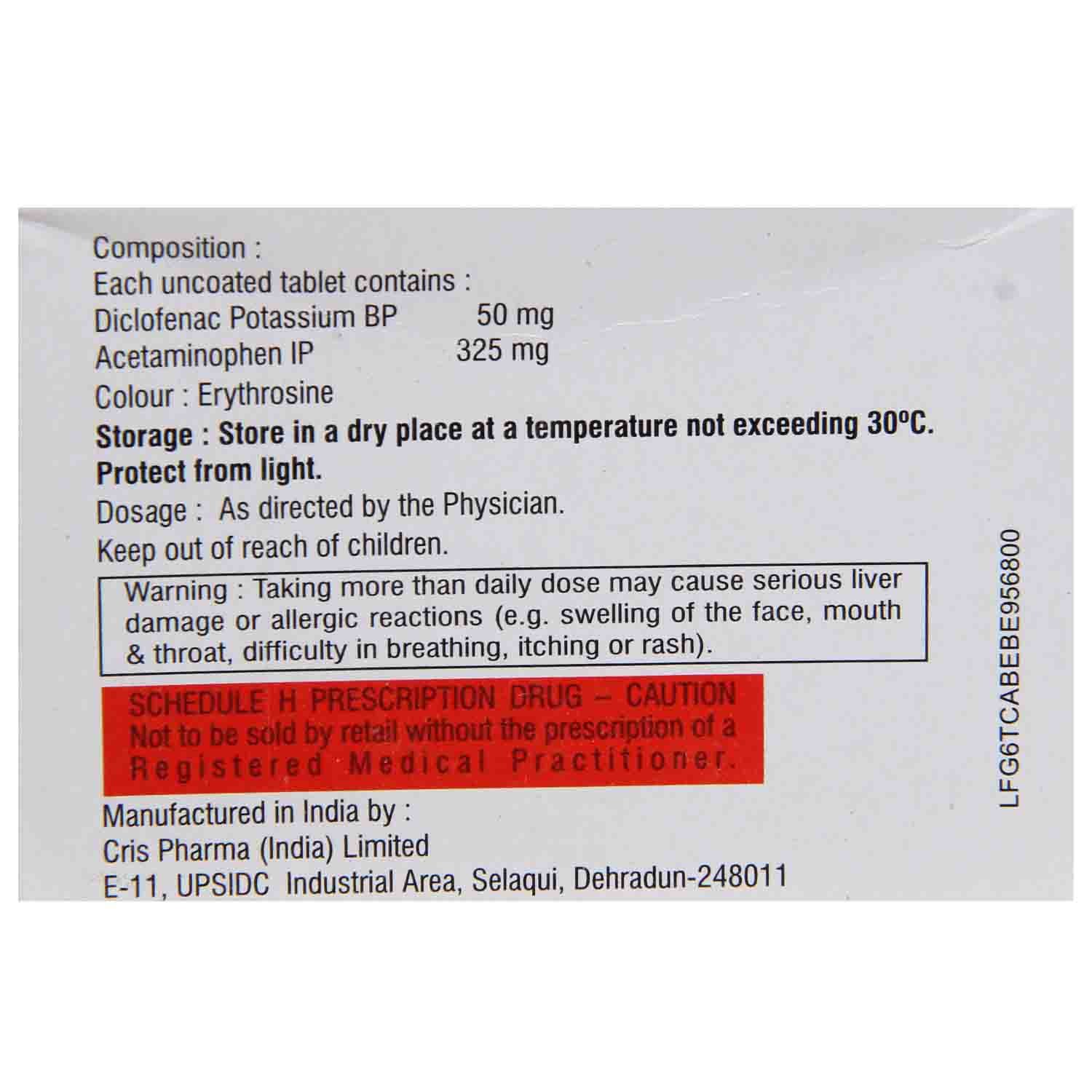
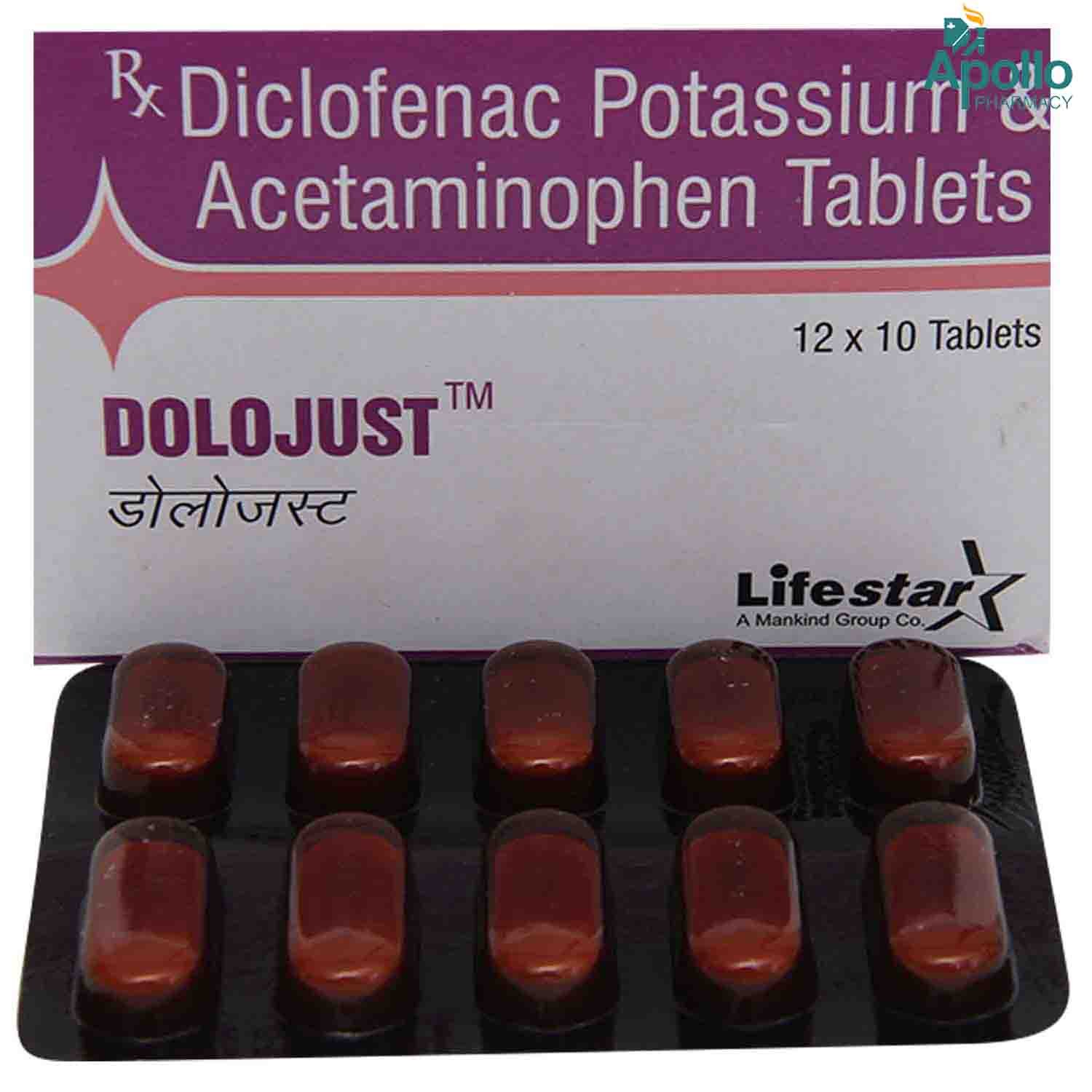
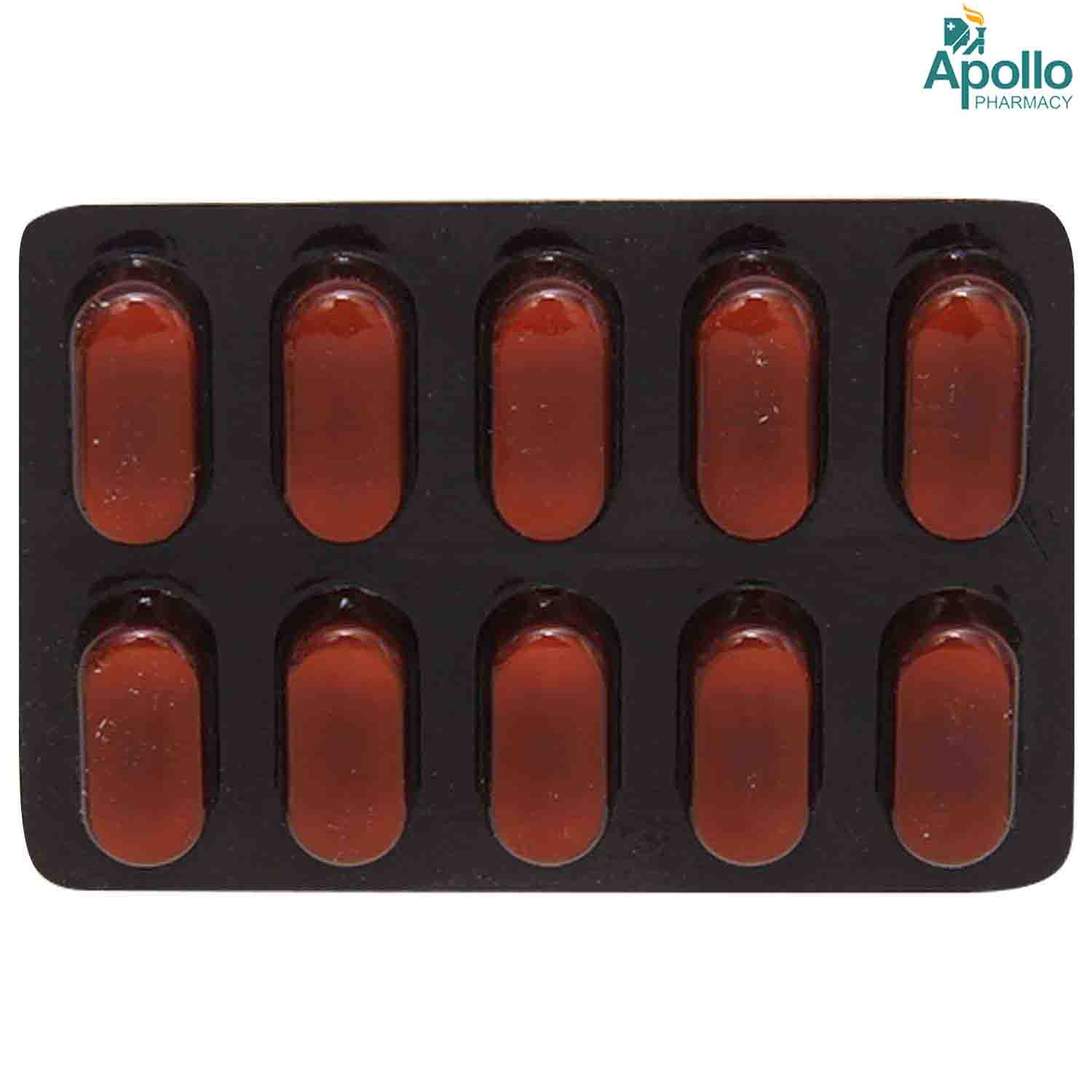
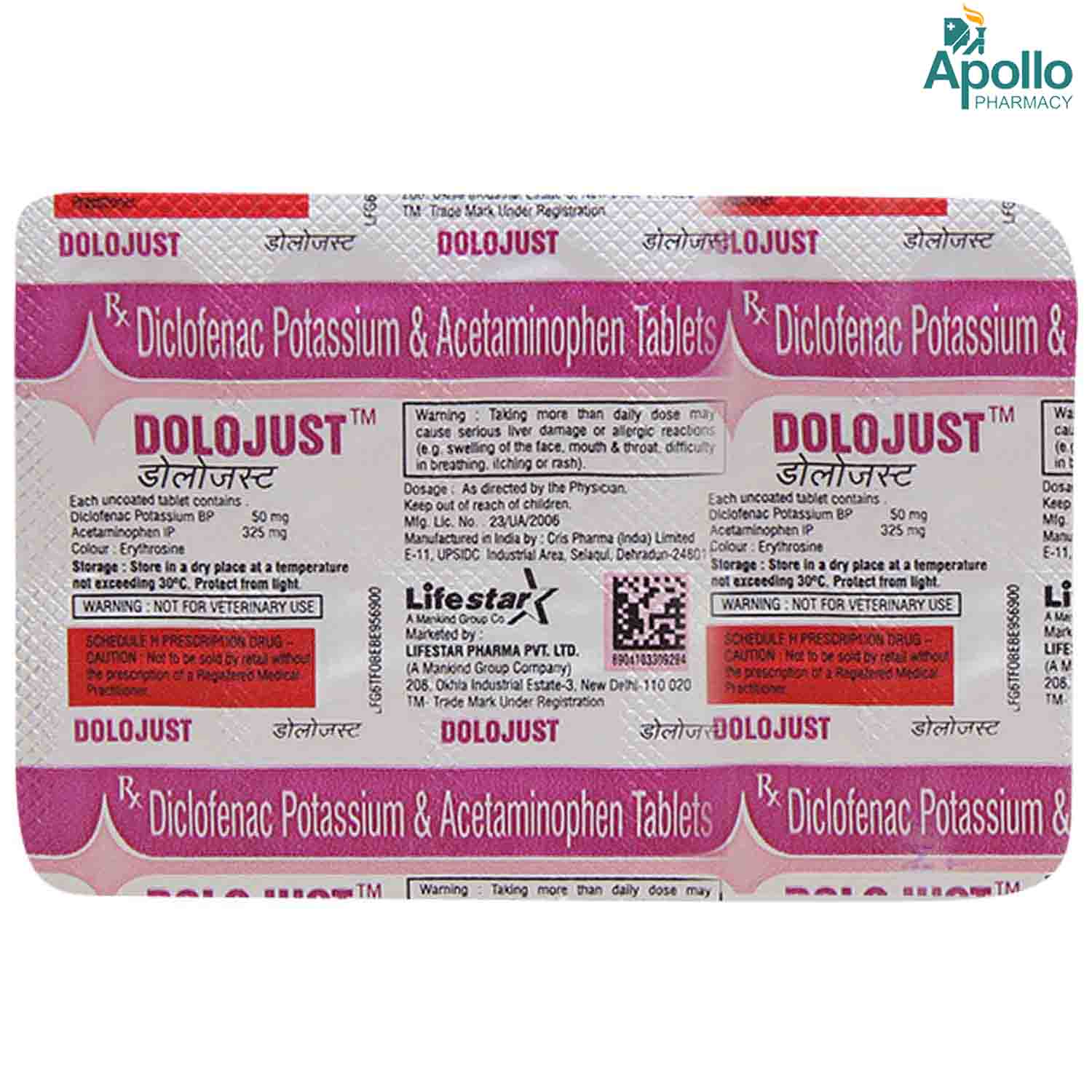
MRP ₹26.5
(Inclusive of all Taxes)
₹4.0 Cashback (15%)
know your delivery time
Provide Delivery Location
Composition :
Manufacturer/Marketer :
Consume Type :
Expires on or after :
Return Policy :

Secure Payment

Trusted by 8 Crore Indians

Genuine Products
Therapeutic Class
Country of origin
Manufacturer/Marketer address
Author Details
We provide you with authentic, trustworthy and relevant information
Disclaimer
Alcohol
Safe if prescribed
Drinking too much alcohol may irritate your stomach.
Pregnancy
Consult your doctor
Dolojust Tablet is not recommended for use in the last three months of pregnancy as it may harm the unborn child or cause problems at delivery. Hence, if you are pregnant or planning pregnancy, inform your doctor before receiving Dolojust Tablet . Your doctor may prescribe this medicine if the benefits outweigh the risks.
Breast Feeding
Consult your doctor
If you are breastfeeding, inform your doctor before receiving the Dolojust Tablet . Your doctor may prescribe this medicine if the benefits outweigh the risks.
Driving
Safe if prescribed
Dolojust Tablet may affect driving ability as it causes headaches, blurred vision, dizziness or drowsiness.
Liver
Consult your doctor
If you have a history of liver disease, inform your doctor before receiving Dolojust Tablet . Your doctor may adjust the dose of this medicine or prescribe a suitable alternative based on your condition.
Kidney
Consult your doctor
If you have a history of kidney diseases, inform your doctor before receiving Dolojust Tablet . Your doctor may adjust the dose of this medicine or prescribe a suitable alternative based on your condition.
Children
Safe if prescribed
Dolojust Tablet is not recommended for children below 14 years. For children above 14 years, this medicine can be given if a doctor prescribed it.
Product Substitutes
About Dolojust Tablet
Dolojust Tablet belongs to a class of medications known as a non-steroidal anti-inflammatory drug (NSAID) or pain killer. Dolojust Tablet is widely useful for treating painful musculoskeletal joint conditions like osteoarthritis, rheumatoid arthritis and ankylosing spondylitis.
Dolojust Tablet contains Diclofenac (analgesic) and Paracetamol (fever reducer/mild analgesic), effective against painful musculoskeletal pain, joint pain, and skeletal muscle spasms. Diclofenac works by blocking the action of a chemical messenger known as cyclo-oxygenase (COX), which causes pain and swelling at the injured or damaged tissue site. On the other hand, paracetamol acts as a mild analgesic (mild pain reducer) and antipyretic (fever reducer), enhancing Diclofenac's pain relief action. It also helps relieve toothache, ear pain, backache and other musculoskeletal-related pain.
Dolojust Tablet can be taken with or after the meal. Dolojust Tablet may cause common side effects like stomach upset, dizziness, light-headedness, malaise, nausea, vomiting, liver dysfunction (hepatitis), pruritis (itchy skin), and rash, although not everybody gets them. Most of these side effects do not require medical attention and will resolve gradually. However, you are advised to talk to your doctor if the side effects persist or worsen.
Dolojust Tablet is not recommended during the last three months of pregnancy and for children. Inform your doctor if you are pregnant or breastfeeding before receiving this injection. Keep your doctor informed about your health condition and ongoing medicines to rule out any side effects/interactions. Stop taking this medicine if you experience symptoms like tightness of the chest, breathing difficulties, fever, skin rashes, increased heart rate, and or in case of any signs of hypersensitivity.
Uses of Dolojust Tablet
Pain relief (Musculoskeletal pain, Osteoarthritis, Rheumatoid arthritis, Ankylosing spondylitis)
Medicinal Benefits Mweb
Key Benefits
Dolojust Tablet contains Diclofenac (analgesic) and Paracetamol (fever reducer/mild analgesic), effective against painful musculoskeletal pain, joint pain, and skeletal muscle spasms. Diclofenac works by blocking the action of a chemical messenger known as cyclo-oxygenase (COX), which causes pain and swelling at the injured or damaged tissue site. On the other hand, paracetamol acts as a mild analgesic (mild pain reducer) and antipyretic (fever reducer), enhancing Diclofenac's pain relief action. It also helps relieve toothache, ear pain, backache and other musculoskeletal-related pain.
Directions for Use
Swallow it as a whole with water; do not crush, break or chew it.
Side Effects of Dolojust Tablet
Dizziness
- Light-headedness
- Malaise (feeling of discomfort)
- Nausea
- Vomiting
- Liver dysfunction
Drug Warnings
Do not take Dolojust Tablet if you are allergic to any components present in it. Patients with asthma, prolonged bleeding time, wheezing (whistling sound during breath), and blocked airways (bronchospasm) should avoid using Dolojust Tablet . It is not recommended for use in children less than 14 years of age, people with liver disease, heart disease, or gastric ulcers/bleeding problems. Dolojust Tablet may be associated with a small increase in the risk of heart attack (myocardial infarction). Pregnant women should not take during their last trimester of pregnancy. Dolojust Tablet is excreted in the breast milk, so the nursing mother should contact the doctor before its usage. Avoid the consumption of alcohol as it may damage your liver and cause even more side effects on taking this drug. Consult your doctor if your pain, inflammation, and fever symptoms do not disappear even after ten days.
Drug-Drug Interactions
Drug-Drug Interactions
Login/Sign Up
Co-administration of Dolojust Tablet with Meloxicam can increase the risk or severity of gastrointestinal side effects.
How to manage the interaction:
Taking Meloxicam with Dolojust Tablet is not recommended as it can possibly result in an interaction, it can be taken if your doctor has advised it. However, consult your doctor immediately if you experience symptoms such as dizziness, lightheadedness, red or black, tarry stools, coughing up or vomiting fresh or dried blood that looks like coffee grounds, severe headache, and weakness. Do not stop any medication without doctor's advise.
Taking Dolojust Tablet with Enoxaparin can increase the risk of bleeding complications.
How to manage the interaction:
There may be a possible interaction between Dolojust Tablet and Enoxaparin, but they can be taken together if your doctor has prescribed them. However, consult your doctor immediately if you experience any unusual bleeding or bruising, swelling, vomiting, blood in your urine or stools, headache, dizziness, or weakness. Do not discontinue any medications without consulting a doctor.
Coadministration of Dolojust Tablet with Ketoconazole may increase the risk of liver problems.
How to manage the interaction:
There may be a possible interaction between Dolojust Tablet and Ketoconazole, but they can be taken together if a doctor has prescribed them. However, consult a doctor immediately if you have fever, chills, joint pain or swelling, unusual bleeding or bruising, skin rash, itching, loss of appetite, fatigue, nausea, vomiting, abdominal pain, dark colored urine, light colored stools, and/or yellowing of the skin or eyes. Do not discontinue any medications without consulting a doctor.
Taking Dolojust Tablet with human immunoglobulin may increase the risk of kidney problems.
How to manage the interaction:
Although there is an interaction between Human immunoglobulin and Dolojust Tablet, you can take these medicines together if prescribed by a doctor. However, consult the doctor immediately if you experience symptoms such as nausea, vomiting, loss of appetite, increased or decreased urination, sudden weight gain or weight loss, fluid retention, swelling, shortness of breath, muscle cramps, tiredness, weakness, dizziness, confusion, and irregular heart rhythm. Do not discontinue any medications without consulting a doctor.
Taking Dolojust Tablet with Ibrutinib can increase the risk of bleeding tendencies.
How to manage the interaction:
There may be a possible interaction between Dolojust Tablet and Ibrutinib, but they can be taken together if a doctor has prescribed them. However, consult a doctor immediately if you experience any unusual bleeding, dizziness, lightheadedness, red or black, tarry stools, coughing up or vomiting fresh or dried blood that looks like coffee grounds, or severe headaches. Do not discontinue any medications without consulting a doctor.
Co-administration of Dolojust Tablet with Celecoxib may increase the risk of stomach bleeding and ulcers.
How to manage the interaction:
Although there is a interaction between Dolojust Tablet and Celecoxib, but it can be taken if your doctor has advised it. Consult a doctor if you experience symptoms like blood in your urine or stool (or a black stool), severe bruising, prolonged nosebleeds, feeling dizzy or lightheaded, weakness or severe headache, vomiting blood or coughing up blood, heavy menstrual bleeding (in women), difficulty breathing, or chest pain. Do not discontinue any medication without consulting a doctor.
Co administration of Dolojust Tablet with Leflunomide may result in liver problems.
How to manage the interaction:
Co-administration of Dolojust Tablet and Leflunomide can lead to an interaction; it can be taken if advised by your doctor. However, if you have a fever, chills, joint pain or swelling, unusual bleeding or bruising, skin rash, itching, loss of appetite, fatigue, nausea, vomiting, abdominal pain, dark-colored urine, light-colored stools, or yellowing of the skin or eyes. Do not stop using any medication without consulting your doctor.
Concomitant administration of Dolojust Tablet and furosemide may decrease the therapeutic efficacy of furosemide and adversely affect renal function.
How to manage the interaction:
There may be a possible interaction between Dolojust Tablet and furosemide, but they can be taken together if your doctor has prescribed them. However, consult your doctor immediately if you experience symptoms like nausea, dizziness, irregular heartbeats, altered blood pressure, tingling. Do not stop using any medications without first talking to your doctor.
Co-administration of Dolojust Tablet and tenofovir alafenamide may cause kidney problems.
How to manage the interaction:
There may be a possible interaction between Dolojust Tablet and Tenofovir alafenamide but they can be taken together if your doctor has prescribed them. However, consult your doctor immediately if you experience symptoms such as such as nausea, vomiting, loss of appetite, increased or decreased urination, sudden weight gain or weight loss, fluid retention, swelling, shortness of breath, bone pain, muscle cramps, tiredness, weakness, dizziness, confusion, and irregular heart rhythm. Do not stop using any medications without talking to your doctor.
Taking Dasatinib together with Dolojust Tablet may increase the risk of bleeding.
How to manage the interaction:
There may be a possible interaction between Dolojust Tablet and Dasatinib but they can be taken together if a doctor has prescribed them. However, consult a doctor immediately if you experience dizziness, red or black, tarry stools, or severe headaches. Do not discontinue any medications without consulting a doctor.
Drug-Food Interactions
Drug-Food Interactions
Login/Sign Up
Drug-Diseases Interactions
Drug-Diseases Interactions
Login/Sign Up
Drug-Drug Interactions Checker List
- ASPIRIN
- IBUPROFEN
- NAPROXEN
- CIPROFLOXACIN
- FUROSEMIDE
- TRAMADOL
- HYDROCODONE
- OXYCODONE
- LEVOFLOXACIN
- MOXIFLOXACIN
- NALIDIXIC ACID
- NORFLOXACIN
- OFLOXACIN
- BUMETANIDE
- DIGOXIN
- COLESTIPOL
- CHOLESTYRAMINE
- PHENYTOIN
- CICLOSPORIN
- TACROLIMUS
- HYDROCORTISONE
- PREDNISOLONE
- WARFARIN
- DULOXETINE
- CIMETIDINE
Habit Forming
Diet & Lifestyle Advise
Physical activity helps strengthen muscles and relieves joint stiffness. Gentle exercises like 20-30 minutes of walking or swimming would be helpful.
Performing yoga may also help in improving joint flexibility and pain management.
Maintain a healthy weight by performing regular low-strain exercises and eating healthy food.
Get adequate sleep, as resting the muscles can help reduce inflammation and swelling.
Follow heat or cold therapy, and apply a cold or hot compress on the joints for 15-20 minutes regularly.
De-stress yourself by meditating, reading books, taking a warm bubble bath or listening to soothing music.
Acupuncture, massage and physical therapy may also be helpful.
Eat food rich in antioxidants such as berries, spinach, kidney beans, dark chocolate, etc.
Foods containing flavonoids help in reducing inflammation. These include soy, berries, broccoli, grapes and green tea.
Avoid smoking and alcohol consumption.
All Substitutes & Brand Comparisons
RX
Out of StockButacin D 50mg/500mg Tablet
₹12
(₹1.08 per unit)
54% CHEAPERRX
Out of StockClomet-P 50mg/500mg Tablet
₹12.3
(₹1.11 per unit)
53% CHEAPERRX
Out of StockAvifen 50mg/500mg Tablet
₹35
(₹1.26 per unit)
47% CHEAPER

Have a query?
Buy best C.n.s Drugs products by
Intas Pharmaceuticals Ltd
Sun Pharmaceutical Industries Ltd
Torrent Pharmaceuticals Ltd
Alkem Laboratories Ltd
Abbott India Ltd
Cipla Ltd
Alteus Biogenics Pvt Ltd
Micro Labs Ltd
Lupin Ltd
Ipca Laboratories Ltd
D D Pharmaceuticals Pvt Ltd
Icon Life Sciences
Mankind Pharma Pvt Ltd
Tripada Healthcare Pvt Ltd
Arinna Lifesciences Ltd
Linux Laboratories Pvt Ltd
East West Pharma India Pvt Ltd
La Renon Healthcare Pvt Ltd
Talent India Pvt Ltd
Tas Med India Pvt Ltd
Zydus Healthcare Ltd
Cnx Health Care Pvt Ltd
Eris Life Sciences Ltd
Leeford Healthcare Ltd
Emcure Pharmaceuticals Ltd
Macleods Pharmaceuticals Ltd
Sigmund Promedica
Aristo Pharmaceuticals Pvt Ltd
Dr Reddy's Laboratories Ltd
Troikaa Pharmaceuticals Ltd
Consern Pharma Ltd
Zydus Cadila
Shine Pharmaceuticals Ltd
Wockhardt Ltd
Ardent Life Sciences Pvt Ltd
Crescent Formulations Pvt Ltd
Theo Pharma Pvt Ltd
Reliance Formulation Pvt Ltd
Ikon Pharmaceuticals Pvt Ltd
Propel Healthcare
Neon Laboratories Ltd
Jagsam Pharma
Msn Laboratories Pvt Ltd
Morepen Laboratories Ltd
Pulse Pharmaceuticals
Sanofi India Ltd
Med Manor Organics Pvt Ltd
Hetero Healthcare Pvt Ltd
Novartis India Ltd
Crescent Therapeutics Ltd
Elder Pharmaceuticals Ltd
Solvate Laboratories Pvt Ltd
Akumentis Healthcare Ltd
Mova Pharmaceutical Pvt Ltd
Psyco Remedies Ltd
Tripada Lifecare Pvt Ltd
Ajanta Pharma Ltd
Cyrus Remedies Pvt Ltd
Medishri Healthcare Pvt Ltd
Cadila Healthcare Ltd
Glenmark Pharmaceuticals Ltd
Matteo Health Care Pvt Ltd
Hbc Life Sciences Pvt Ltd
Lyf Healthcare
Matias Healthcare Pvt Ltd
Mesmer Pharmaceuticals
Alembic Pharmaceuticals Ltd
Capital Pharma
Crescent Pharmaceuticals
Medopharm Pvt Ltd
Alniche Life Sciences Pvt Ltd
Kivi Labs Ltd
Talin Remedies Pvt Ltd
USV Pvt Ltd
Quince Lifesciences Pvt Ltd
Solis Pharmaceuticals
Infivis Life Care
Zuventus Healthcare Ltd
Cadila Pharmaceuticals Ltd
Pfizer Ltd
Wallace Pharmaceuticals Pvt Ltd
A N Pharmacia Laboratories Pvt Ltd
Blue Cross Laboratories Pvt Ltd
Jenburkt Pharmaceuticals Ltd
Lia Life Sciences Pvt Ltd
Mano Pharma
Medley Pharmaceuticals Ltd
Primus Remedies Pvt Ltd
FDC Ltd
Maneesh Pharmaceuticals Ltd
Apex Laboratories Pvt Ltd
Gagnant Healthcare Pvt Ltd
Ozone Pharmaceuticals Ltd
RPG Life Sciences Ltd
Strides Shasun Ltd
Unichem International
GlaxoSmithKline Pharmaceuticals Ltd
Kuresys Labs Pvt Ltd
LA Pharma
Trion Pharma India Llp





